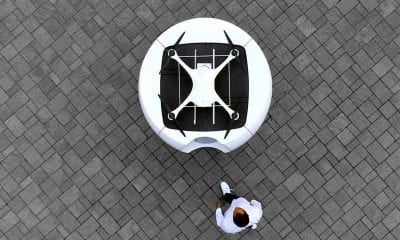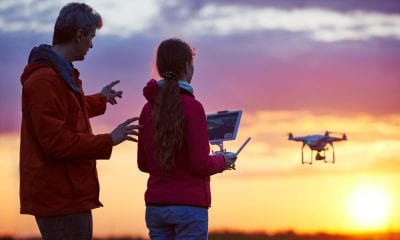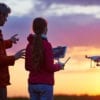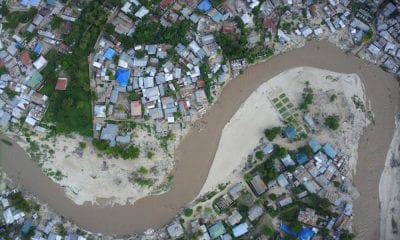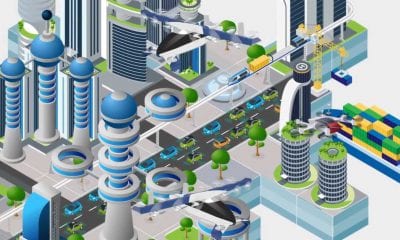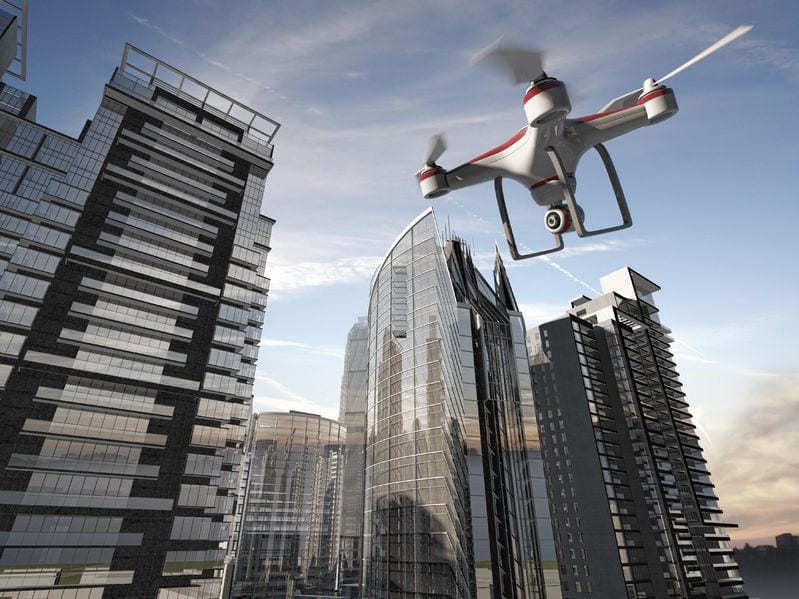
Drone Hive
Drones and Smart Cities: A Crucial Link For The Future
Drones and Smart Cities: A Crucial Link For The Future
Welcome to the 21st century – a time when drones are more than just recreational flying objects. In 2018, we are seeing drones already being used to document accident scenes, support first responder activities as well as monitor construction sites.
Over the next decades, drones are poised to become a vital part of what we know as a smart city infrastructure and network. One report suggests that over the next 20 years, cities around the world will invest around $41 trillion into the creation of smart city technologies and infrastructure.
Put simply, a smart city is one that is built on data from sensors that are embedded throughout it.
Drones can be a major part of the citywide sensor networks, just like smart street lights, fleet vehicles as well as smartphones. In scenarios like these, drones will be able to provide situational awareness. They will inspect the infrastructure, track the traffic and zoning and take the fleet vehicles off the road.
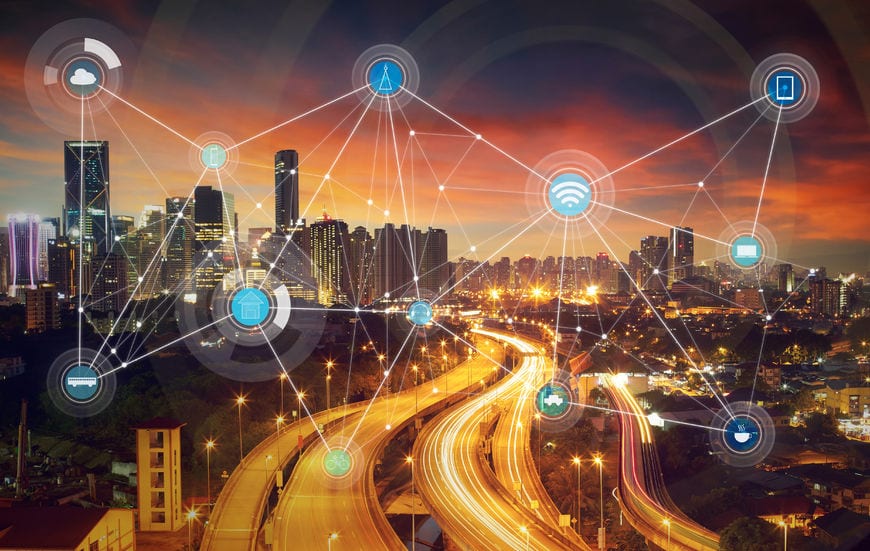
A smart city and wireless communication network
The Perfect Answer To Cities That Are Becoming Denser And More Urban
Nowadays, there is an increasing number of people that are moving to cities in droves. The result of this is a denser city infrastructure – where the city is actually the backdrop for all of the social, economic and commercial activities. As cities become denser and more urban, they need to rely on a technology that helps them improve the quality of life.
Today, some of the solutions for these problems come in a form of ridesharing and platforms for civic tech and data sharing. However, in the future, cities will need to rely on mobility solutions which are ‘high-tech’ and can even include flying objects.
Drones are definitely the first contact of our society with this type of technology. According to experts, this type of technology often starts with the need to deliver services and products more rapidly and efficiently. Currently, drones have a tremendous amount of potential in this perspective.
There are thousands of drones that are already being used to improve the city life. From ones which are used to document accident scenes to support-first responder activities, construction site monitoring and more, drones are already taking on more of the responsibilities and tasks which are dangerous for city workers.
So, it is definitely safe to say that we are at a starting point of embracing drones as part of our city infrastructure.
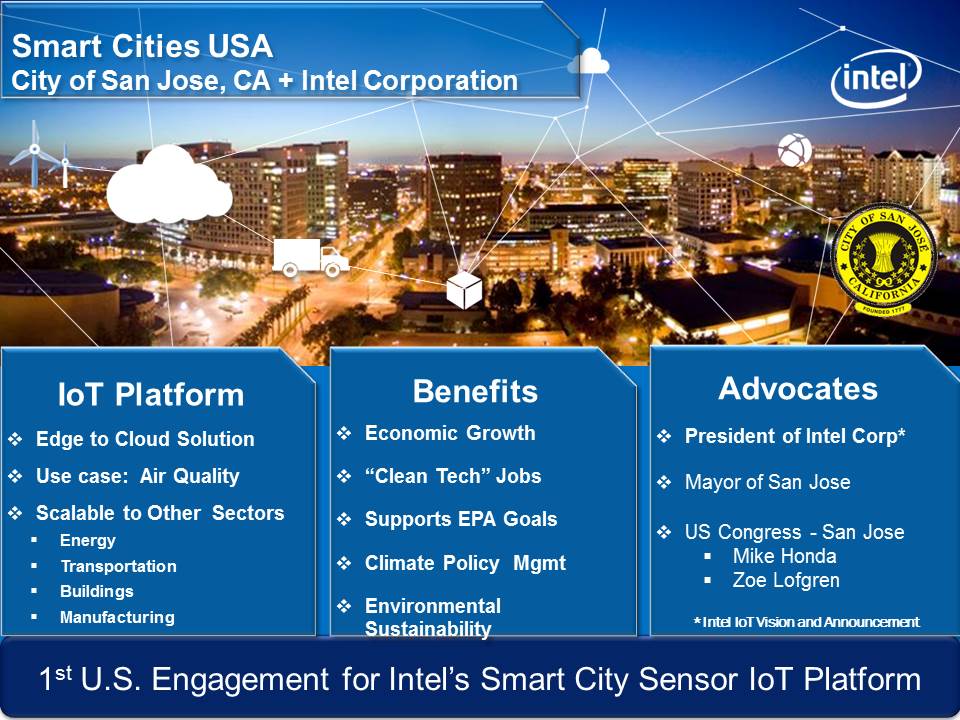
Source: http://smartamerica.org
A Variety Of Uses For A Better Future
There are many benefits of drone use nowadays. Thanks to their mobility, low-cost maintenance and coverage, they are the perfect solution in many areas. Below are listed some of the areas which will soon see these benefits from drones.
- Traffic management – We are all victims of chaotic traffic. This kills our time and wastes the resources of a city. If there is just an eye in the sky that can guide the people on the ground about the cause of traffic jams and proper management, we will all benefit from what’s known as smart traffic management.
- Crowd management – Safety and security are a major concern for every smart city. Drones are playing a huge role in today’s crowd management – and could definitely improve this field in the future. For example, police and private agencies (which are already using drones in parts of the world) can use UAVs to keep an eye on the crowd during any event. This will result in safer cities to live in as well.
- Natural Disaster Control and Monitoring – Drones can also be used during disaster situations. Floods, fires and earthquakes are some of the best examples in which authorities can take precautionary measures by monitoring and deploying response teams in any case of disaster. Drones can here analyze the entire situation and help with a quicker response than emergency calls.
- Smart Transportation – Another vital part of the use of drones is smart transportation, which will likely be another key area of development for any smart city. Basically, every city can depend on drones for improving urban transportation and creating a sustainable ecosystem. For example, drones can map sites for metro projects, bus transit or even bicycle paths. They offer flexibility, versatility and depth of data which can aid the decision-making process in later stages.
- Ocean Mapping – The source of 97% of the planet’s water and producer of more than half of the oxygen that we are breathing are the oceans. However, more than 85% of the ocean’s surfaces remain unmapped and unexplored.
- Air and Climate Management – As cities inevitably become busier, the quality of the air we breathe and the climate created by city systems can be monitored and inform residents and government on real-time actions to better manage the comfort and health of the cities we live in.
As you can see, UAVs or drones are relatively simple to deploy and have a plethora of flexibilities – especially in performing difficult tasks, supporting high-resolution imagery and covering remote areas.
Drone Regulation
Currently, the Federal Aviation Administration (FAA) has worked on standards for remote identification and tracking of drones. This will definitely make it easier for any smart city to integrate drones in its infrastructure.
There are already a couple of recommendations from the FAA committee regarding the remote identification and tracking of drones – which could be used by law enforcement in the future in order to see which drones are flying and if they are safe to fly.
A 2018 report from Business Insider Intelligence gives a high-level overview of the commercial drone regulation all around the world. To sum it up, the current landscape of drone regulation is changing – and going in the direction of full development of the drone industry in the large markets.
A Final Word
The ‘Smart City’ of the future may include several drone platforms that have to be in operation and working together. Currently, the main challenges are regulations, integrations of a city-wide system and security, which all need to be properly addressed so that we could soon benefit from the drone-powered type of smart city landscape.









